
1953 was a pivotal year in the evolution of the shape of the theatre screen. Attempts had been made to broaden the screen shape in 1929-1930 but they did not take hold for a variety of reasons. In 1931 there finally came a consensus among major studios as to the exact camera and projector aperture dimensions for 35mm sound films. This consensus provided an aspect ratio of 1.37 width to 1.0 height. This was very close to the original 1.33:1 silent screen shape that had prevailed since the early part of the 20th century. The 1.37:1 aspect ratio remained unchallenged until 1953, following the phenomenal impact of Cinerama the previous year. Cinerama is universally credited with the movement to wide screens, but it is seldom mentioned that it also pushed the studios and exhibitors into the use of LARGE screens, meaning that not only were there efforts to widen the picture but the height was considered in need of enlargement as well. The farther the theatre could get from the tiny television screen, the better.
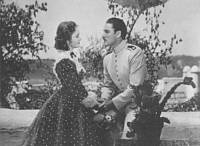
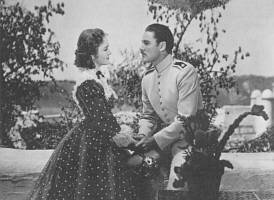
By March, 1953, the wheels were in motion to forever alter the shape of the screen. 20th Century-Fox had been very public about their upcoming new system, CinemaScope, and the other major studios were also looking at how to achieve wider and taller images without investing in costly new equipment, at least on their part, the exhibitors would have to fork over some money to take advantage of the plans of the studios. Each studio tested their unreleased films and ran earlier product to determine how much cropping could be done to achieve a wider screen without ruining the image.
Paramount was the first to break with the traditional 1.37:1 aspect ratio with the release of Shane in 1953. The film, which was photographed conventionally, was projected with the top and bottom cropped to achieve a 1.66:1 aspect ratio and theatres used new larger screens to sell the "new" wide screen concept to the public. Paramount established 1.66:1 for their conventional cropped widescreen presentations. Major theatres in large markets also ran Shane with interlocked three-channel stereo sound on a separate magnetic film. Other studios followed suit with their biggest productions, including many in 3-D, in 1953. 1.66:1

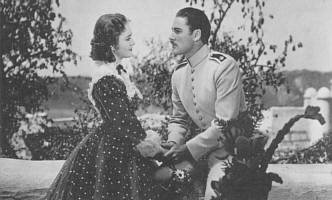

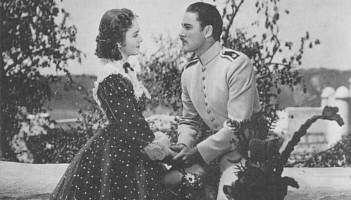
Metro-Goldwyn-Mayer and Disney adopted a cropped aspect ratio of 1.75:1 for their non-anamorphic widescreen product. The composition of the original 1.37:1 is beginning to show signs of some compromise. At this time, Metro-Goldwyn-Mayer announced that it would no longer be making films in black and white, rather they would be using Anscocolor, Technicolor, and Eastmancolor. Simultaneously, John Arnold, M-G-M's chief director of photography, was working on a secret project to eliminate grain in wide screen films. See Arnoldscope article in the Ultra Panavision wing.

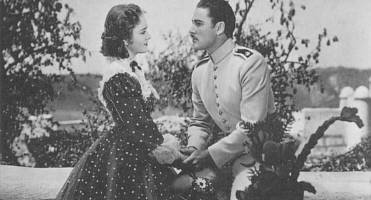
Universal-International and Columbia Pictures determined that they could get by with cropping to an aspect ratio of 1.85:1. Clearly the 1.37 frame is being compromised and this screen shape would lend itself acceptable mostly for newly photographed product where consideration for projection anywhere between 1.37:1 and 1.85:1 was made. Close ups filmed with the older composition posed the greatest problems as foreheads and chins started to disappear. Problems with titles being cut off were also apparent.
Warner Bros. made no early committment to any specific cropped ratio but gradually the industry evolved towards 1.85:1 as new films were photographed with wider ratios in mind. Cropping a film composed for 1.66:1 or 1.75:1 was not disastrous if projected at 1.85:1. In all cases, the studios recommended that exhibitors invest in larger screens with increased reflectivity to overcome light losses.
The overwhelming acceptance of CinemaScope made it unnecessary for theatres to install new screens solely to project the cropped images in higher magnification. As Paramount began filming exclusively in VistaVision, their promotion of the 1.66:1 aspect ratio was altered to 1.85:1 due to significant improvements in color printing at Technicolor and the higher definition of their large format negative.
Even though 1.85:1 was rapidly being adopted in North America, European theatres settled on 1.66:1. The reason for the difference is probably an economic rather than an artistic consideration. The European economy had gone from the devastation of the Great Depression directly into World War II and the effects would last for decades. Installation of giant new screens came much slower in Europe. European motion picture production was slow to get back to its pre-war levels so films composed for wider ratios were not a huge factor and there was an enormous backlog of unseen American films, made in 1.37:1, that were very popular with European audiences. Television had not eroded the audiences at this time either, so there was no need to significantly alter screen shape to differentiate movies from T.V. Over the past 20 years, European standards have evolved to embrace the 1.85:1 aspect ratio as a defacto standard, in addition to the 2.40:1 CinemaScope ratio.
While there have been numerous films photographed at ratios of 1.66:1 and 1.75:1 over the past decades, ultimately the shape seen on the screen is what is convenient for exhibitors. It is for this reason that unusual schemes were used to insure that re-releases of films like Fantasia and Gone With The Wind were presented in their proper aspect ratios.
Today the vast majority of non-anamorphic films are composed for exhibition at 1.85:1 with consideration for the 1.78:1 (16x9) ratio adopted for HD Television. In photography, the camera aperture can be sized to create a "hard matte" resulting in the image being photographed to be of a 1.66:1 down to 1.85:1 ratio or the film can be made with a so-called "soft matte" in which the entire 1.37:1 Academy aperture is exposed but composition is protected for exhibition with projector apertures of 1.85:1. Such films may require special prints for television even though the screen shape is about the same, because many unwanted artifacts, such as microphone booms, lights, or even the tops of sets may be visible in the area on the film not intended to be shown.